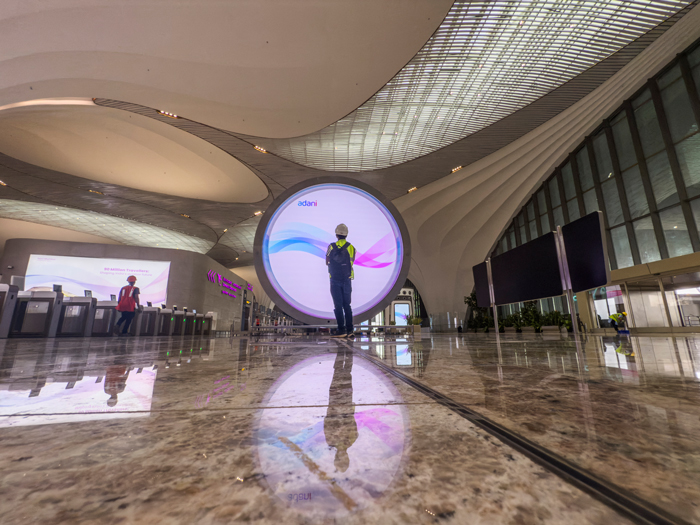In its first month of operations, NMIA will run a 12-hour schedule, handling 23 daily departures and up to ten flight movements per hour.
India’s newest greenfield airport, the Navi Mumbai International Airport (NMIA), will begin commercial operations on December 25. The launch will add capacity to the growing aviation needs of the Mumbai Metropolitan Region (MMR).
Earlier, Prime Minister Narendra Modi had inaugurated the mega-project on October 8.
In the first month, NMIA will operate for 12 hours between 0800 hrs and 2000 hrs, handling 23 scheduled daily departures. During this period, the airport will manage up to ten flight movements per hour.
The inaugural flight to arrive at NMIA will be IndiGo 6E460 from Bengaluru, scheduled to land at 0800 hrs. Shortly after, IndiGo 6E882 will depart for Hyderabad at 0840 hrs, marking the first outbound service from the new airport. During the initial launch period, passengers will benefit from services operated by IndiGo, Air India Express, and Akasa Air, connecting Mumbai to 16 major domestic destinations.
From February 2026, the airport will transition to round-the-clock operations, expanding to 34 daily departures.
“To ensure a seamless start, NMIA is conducting comprehensive Operational Readiness and Airport Transfer (ORAT) trials in collaboration with all stakeholders, including security agencies and airline partners,” NMIA said in a statement on Monday.
Further strengthening its preparedness, the paramilitary security organisation, Central Industrial Security Force (CISF), was formally inducted at NMIA on October 29, with deployment across key airport functions.
Airline Expansion Plans
IndiGo, India’s largest airline by passenger volume and fleet, will connect NMIA to ten cities across India and plans to progressively expand its operations by adding direct routes to more destinations.
Akasa Air will begin operations with direct flights to four Indian cities. Its maiden flight between Delhi and NMIA will operate on December 25, followed by services to Goa (Dec 25), Kochi (Dec 26), and Ahmedabad (Dec 31).
“For Akasa Air, NMIA strengthens our strategic presence in the Mumbai Metropolitan Region and western India, allowing us to optimise capacity deployment and capture new demand pools across. Our early association with NMIA reflects our conviction in India’s infrastructure-led growth story and our commitment to fostering balanced regional development,” said Praveen Iyer, Co-Founder and Chief Commercial Officer, Akasa Air.
Air India Group has a comprehensive operational plan ready for NMIA, with a strong presence across passenger and cargo services.
“We are delighted to be working closely with Navi Mumbai International Airport to establish a robust operational base. This partnership aligns with our vision to offer world-class service and expand our reach across key markets,” said Campbell Wilson, CEO and MD of Air India.
Regional Connectivity Gains
Built at an estimated cost of ₹160 billion ($1.93 billion) by Adani Airports, NMIA is designed not merely to ease pressure on Chhatrapati Shivaji Maharaj International Airport (CSMIA) but to reposition Navi Mumbai as a hub for commerce, logistics, and global connectivity. Once fully operational by 2032, NMIA is expected to handle up to 90 million passengers annually.
Among other benefits accruing from the development, the airport will enhance access to Maharashtra’s tourism destinations, from the Konkan coast and Ajanta-Ellora caves to the Western Ghats. Improved international connectivity is expected to draw more global travellers to the state’s cultural and natural heritage sites. On the trade front, NMIA’s cargo infrastructure will strengthen Maharashtra’s role as a manufacturing and export hub. Sectors such as pharmaceuticals, textiles, agriculture, and engineering stand to benefit from faster and more reliable access to global markets.
Beyond its immediate catchment area, NMIA will also benefit regions across Gujarat, Goa, Karnataka, Madhya Pradesh, and the union territory of Daman and Diu through enhanced connectivity and cargo access. Industrial belts in South Gujarat and northern Karnataka stand to gain from faster multimodal integration, while tourism and agro-export corridors in Goa and Daman may see increased throughput.
– Manish Pant


